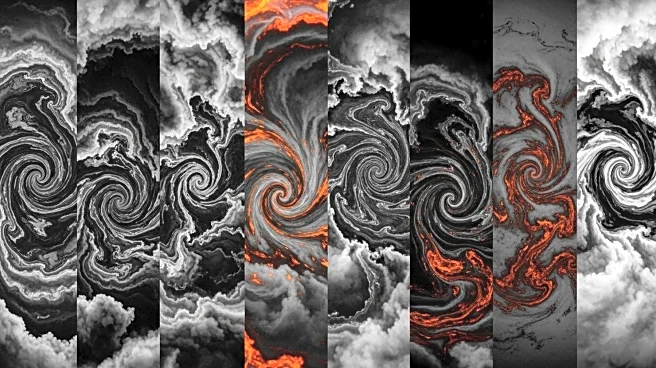What's Happening?
NASA's Earth Polychromatic Imaging Camera (EPIC) on the Deep Space Climate Observatory (DSCOVR) has provided a decade of global hourly aerosol observations using near-UV measurements. The data reveals a significant increase in atmospheric carbonaceous
aerosol load over the past ten years. These aerosols, primarily associated with wildfires in the northern hemisphere, have been consistently detected by EPIC and other spaceborne sensors. Unlike aerosols from tropical biomass burning, which remain in the lower troposphere, those from mid and high-latitude wildfires often ascend to the middle and high troposphere, sometimes reaching the lower stratosphere. This results in a longer residence time compared to those in the troposphere. The EPIC sensor has documented prominent aerosol events globally, from Australia and Chile to North America, Central Europe, Siberia, and China.
Why It's Important?
The increase in atmospheric aerosols has significant implications for air quality and climate change. Carbonaceous aerosols can affect climate by altering the Earth's radiation balance and impacting cloud formation. Their presence in the stratosphere can lead to prolonged atmospheric effects, influencing weather patterns and potentially contributing to climate change. The data from EPIC enhances the understanding of aerosol distribution and its sources, aiding in the development of global air quality monitoring systems. This information is crucial for policymakers and environmental agencies to address the impacts of wildfires and other sources of aerosols on climate and public health.
What's Next?
The continued monitoring and analysis of aerosol data from EPIC and other sensors will be essential in understanding the long-term trends and impacts of atmospheric aerosols. This data can inform strategies to mitigate the effects of wildfires and improve air quality. Collaboration between international space agencies and environmental organizations may be necessary to develop comprehensive global monitoring systems. Further research could explore the specific impacts of aerosols on climate and health, leading to more targeted policy interventions.
Beyond the Headlines
The findings highlight the need for increased awareness and action regarding the sources of atmospheric aerosols, particularly wildfires. There are ethical considerations in balancing economic activities, such as agriculture and land management, with environmental protection. The data underscores the importance of international cooperation in addressing global environmental challenges, as aerosols do not respect national boundaries.














